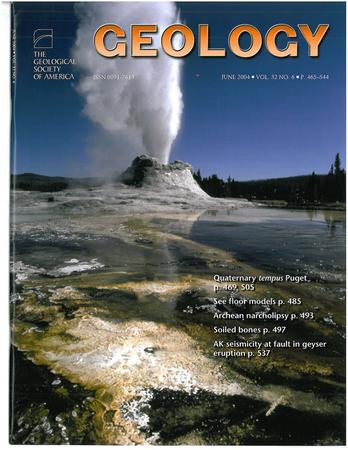Eoarchean apatite uncovers felsic foundations of the Pilbara Craton
IF 4.6
1区 地球科学
Q1 GEOLOGY
引用次数: 0
Abstract
The fragmented record of early Earth is largely preserved in Archean granite-greenstone terranes, yet there is evidence that these ancient continental nuclei may themselves have been built on preexisting crustal substrates. The East Pilbara Terrane (EPT), Western Australia, is the archetypal granite-greenstone terrane, with exposed crust dating back to ca. 3.5 Ga. Radiogenic Hf, Nd, and Pb isotopic studies indicate that the EPT was built on older crustal foundations. However, apart from rare Eoarchean enclaves, xenocrystic and detrital zircons, the age and composition of these crustal foundations remains elusive. Here, we present detrital apatite geochronology and trace-element geochemistry from Paleo-Neoarchean sedimentary successions of the EPT. Apatite U-Pb dates largely record reset ages associated with Meso- and Neoarchean thermal events. The Lu-Hf system in the same crystals retains primary crystallization ages up to ca. 3.84 Ga—the oldest detrital apatite grains discovered to date. Sr-Y systematics indicate that >70% of Eoarchean detrital apatite grains were sourced from tonalite-trondhjemite-granodiorite−type felsic rocks, and the relative proportion of felsic to mafic sources did not change significantly throughout the Archean. We conclude that the EPT was built on Eoarchean crustal foundations that were comparable in composition to the presently exposed Paleo-Mesoarchean granite-greenstone crust, including an important component of felsic rocks.太古宙磷灰石揭示了皮尔巴拉克拉通的英质基础
早期地球的碎片记录主要保存在太古宙花岗岩-绿岩地体中,但有证据表明,这些古代大陆核本身可能是建立在先前存在的地壳基底上的。西澳大利亚的东皮尔巴拉地体(EPT)是花岗岩-绿岩地体的原型,其暴露的地壳可追溯到约3.5 Ga。放射性成因Hf, Nd和Pb同位素研究表明,EPT是建立在更古老的地壳基础上的。然而,除了罕见的太古宙飞地、异晶和碎屑锆石外,这些地壳基础的年龄和组成仍然难以捉摸。本文对东第三纪古-新太古代沉积序列的碎屑磷灰石年代学和微量元素地球化学进行了研究。磷灰石U-Pb年代主要记录了与中太古宙和新太古宙热事件相关的重置年龄。同一晶体中的Lu-Hf体系保留了约3.84 ga的初始结晶年龄,这是迄今为止发现的最古老的磷灰石碎屑颗粒。Sr-Y系统分析表明,太古宙70%的碎屑磷灰石颗粒来源于闪长岩-闪长岩-花岗闪长岩-型长英质岩,长英质与镁质来源的相对比例在整个太古宙没有明显变化。我们得出结论,东第三纪的地壳基础与目前暴露的古-中太古宙花岗岩-绿岩地壳的成分相当,其中包括一个重要的长英质岩石成分。
本文章由计算机程序翻译,如有差异,请以英文原文为准。
求助全文
约1分钟内获得全文
求助全文
来源期刊

Geology
地学-地质学
CiteScore
10.00
自引率
3.40%
发文量
228
审稿时长
6.2 months
期刊介绍:
Published since 1973, Geology features rapid publication of about 23 refereed short (four-page) papers each month. Articles cover all earth-science disciplines and include new investigations and provocative topics. Professional geologists and university-level students in the earth sciences use this widely read journal to keep up with scientific research trends. The online forum section facilitates author-reader dialog. Includes color and occasional large-format illustrations on oversized loose inserts.
 求助内容:
求助内容: 应助结果提醒方式:
应助结果提醒方式:


